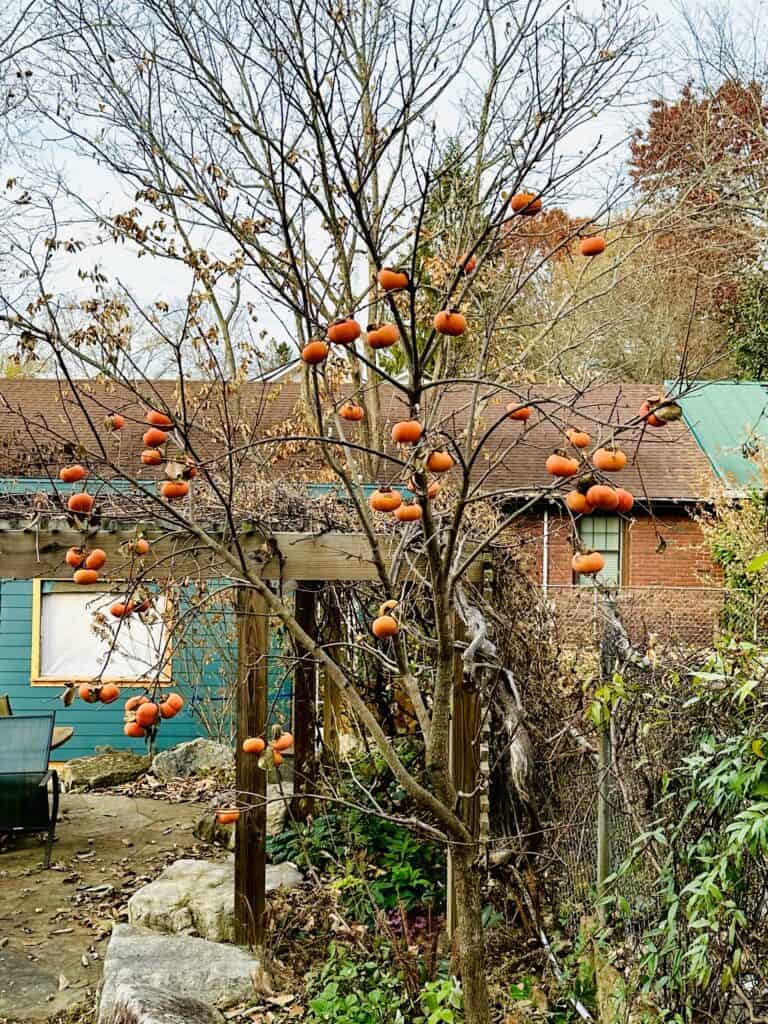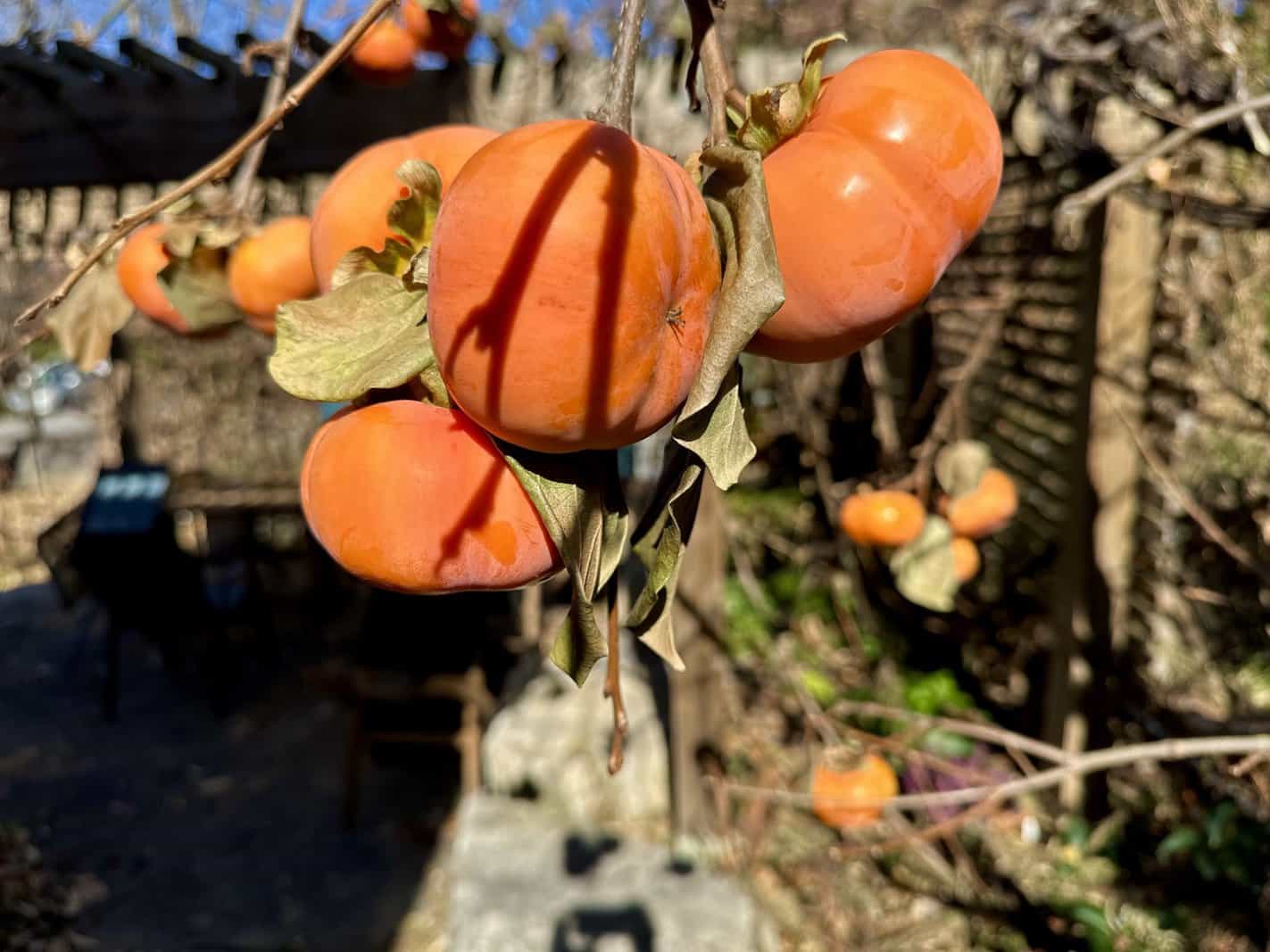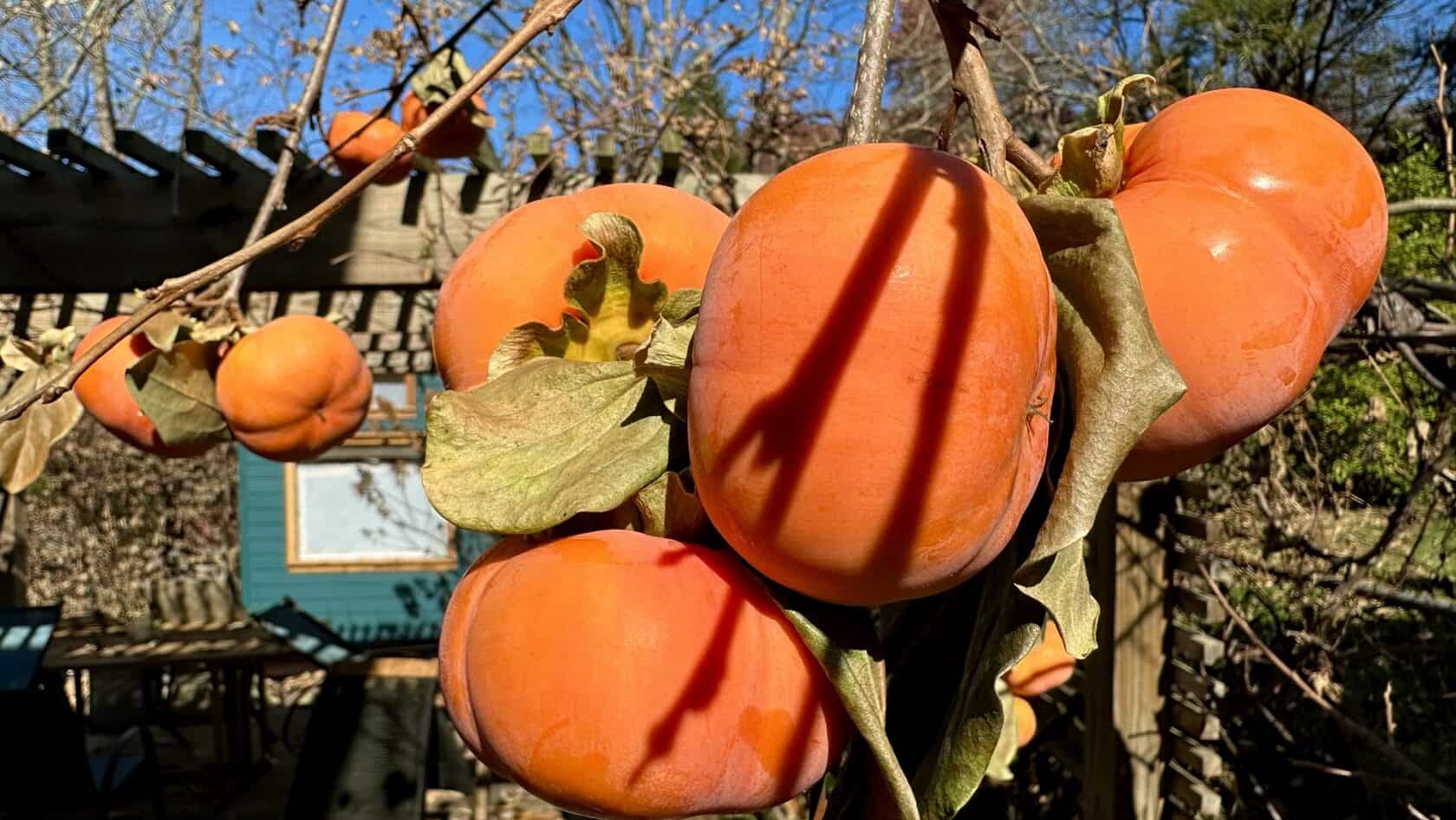One summer over four years ago, we brought home a 2-yr old Fuyu persimmon tree and planted it near the grape arbor in our backyard. My daughter christened our lovely new tree, “Persimma.”
After years of anticipation, Persimma is finally showing her true colors as the most beautiful creature in our garden. Early November in Asheville is generally stunning, bright leaves falling down in waves of shushing sounds on the wind. Yet Persimma, in her exclamatory splendor, takes my breath away!
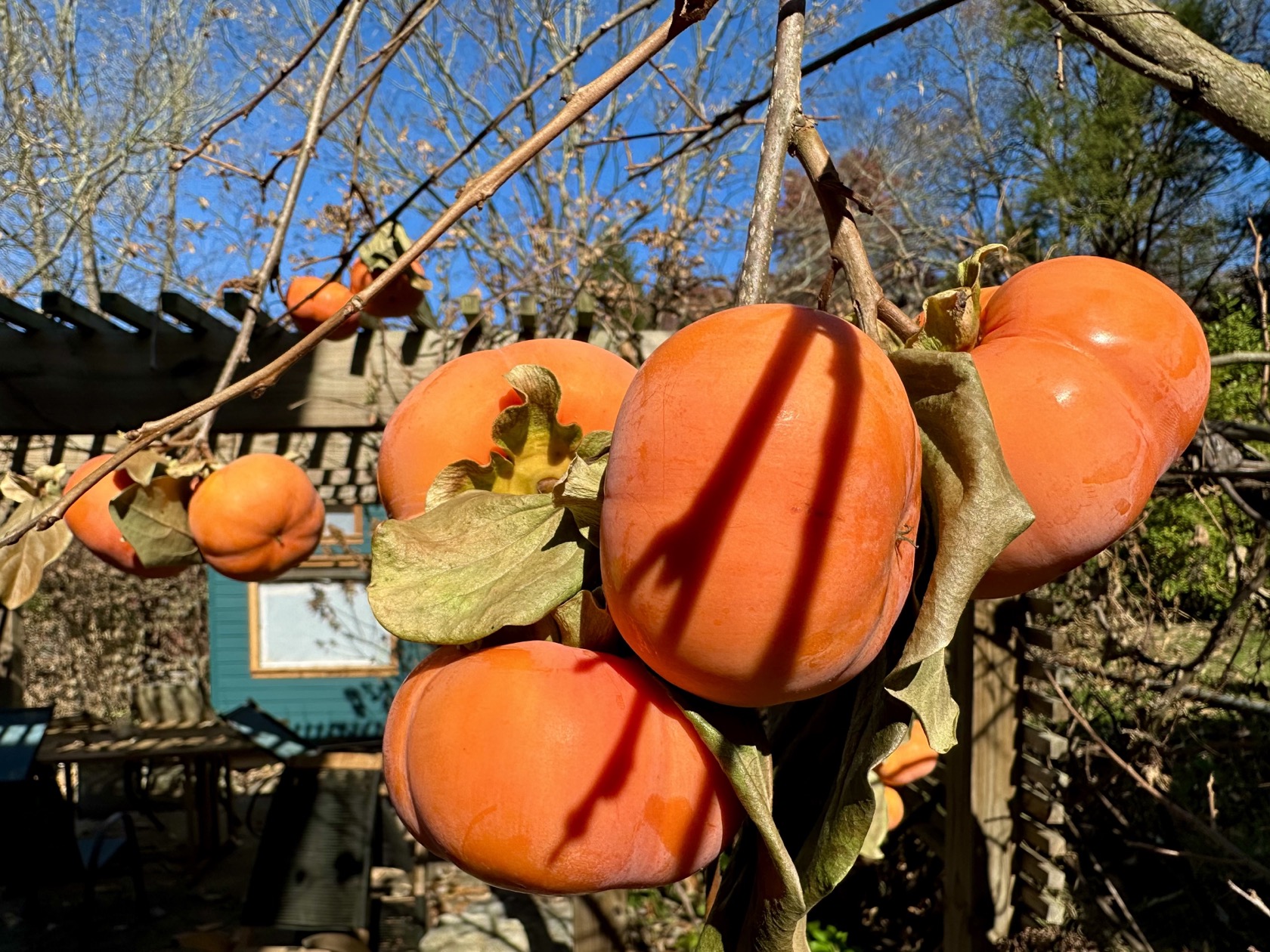
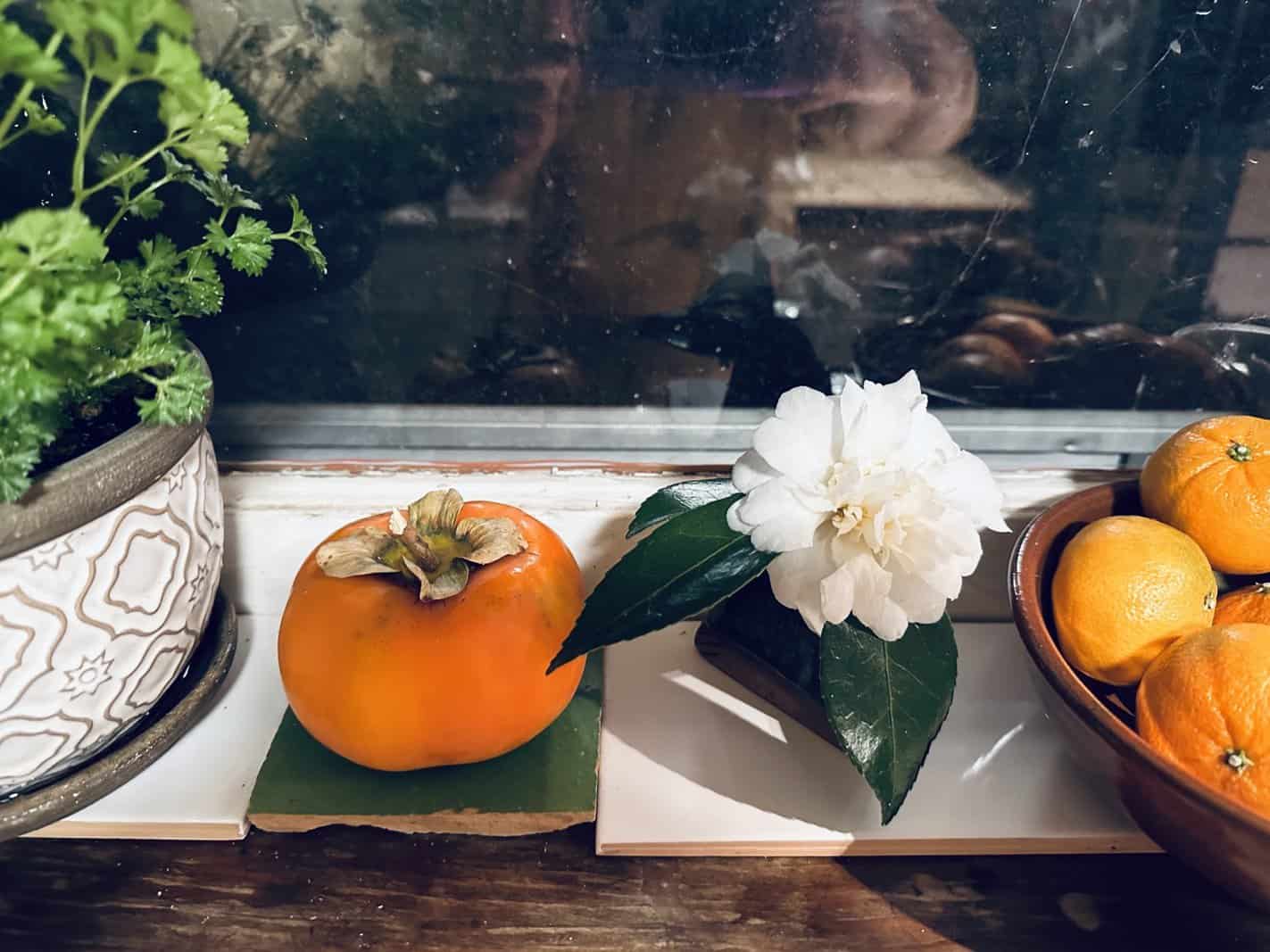
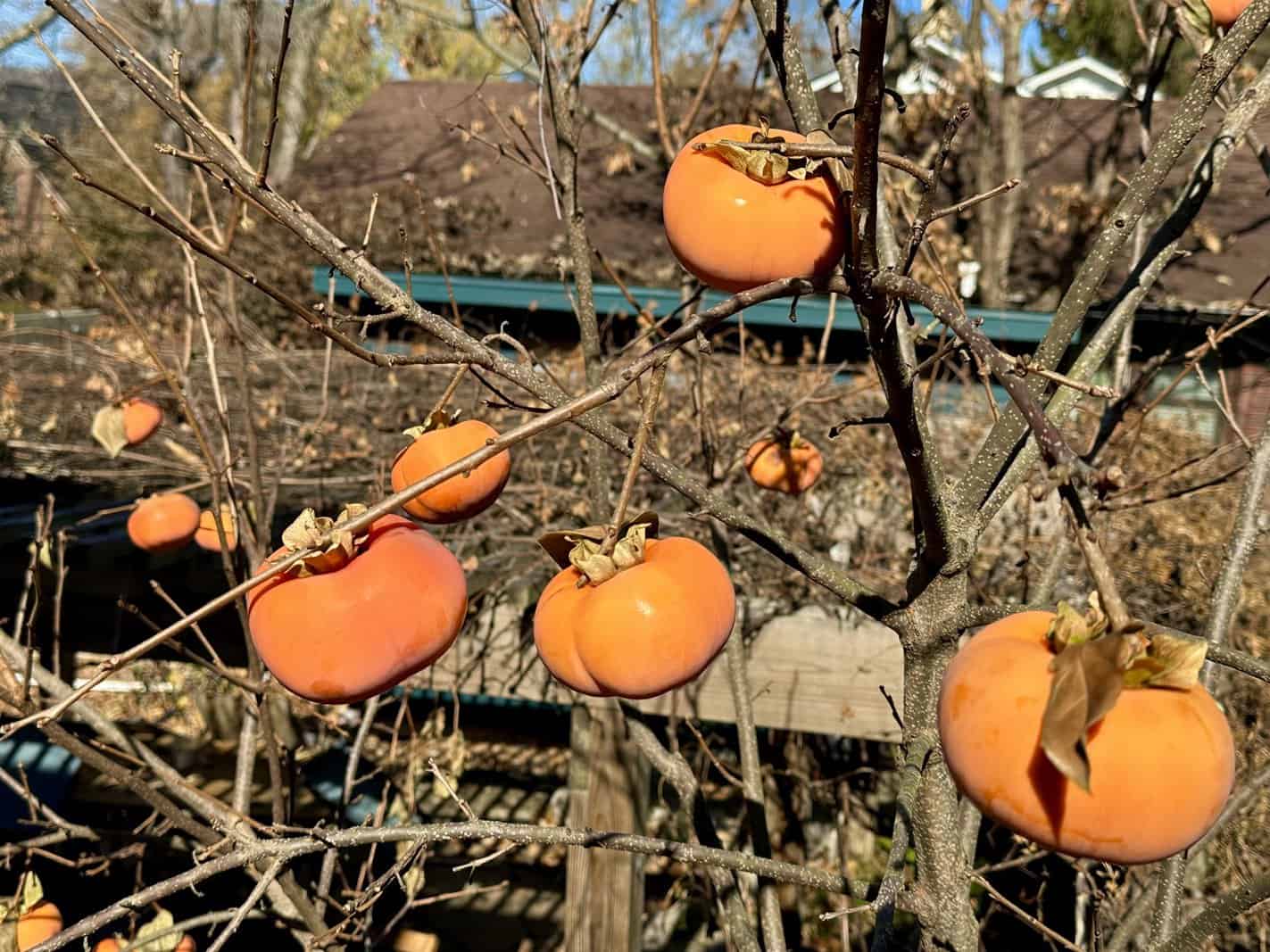
The Delicate Persimmon
Persimmon trees are a multi-season delight, with broad, bright green leaves and sweet, bell-shaped flowers. The flower itself depends on the variety of persimmon: colors can range from white, pink, yellow, grey, and green.
In Fall, leaves burnish to a bright-burnt orange, eventually tumbling to the ground in a graceful display of release. But persimmons come into their full power of appeal at the onset of winter.
They meet the gradual greying of the world around them with the brilliant shock of neon-orange fruits scattered about on a sculptural, bare tree. These bright fruits last well into winter, readying and ripening themselves to be enjoyed indoors as a delectable dessert, or a delicate accompaniment to a steaming cup of mint tea.

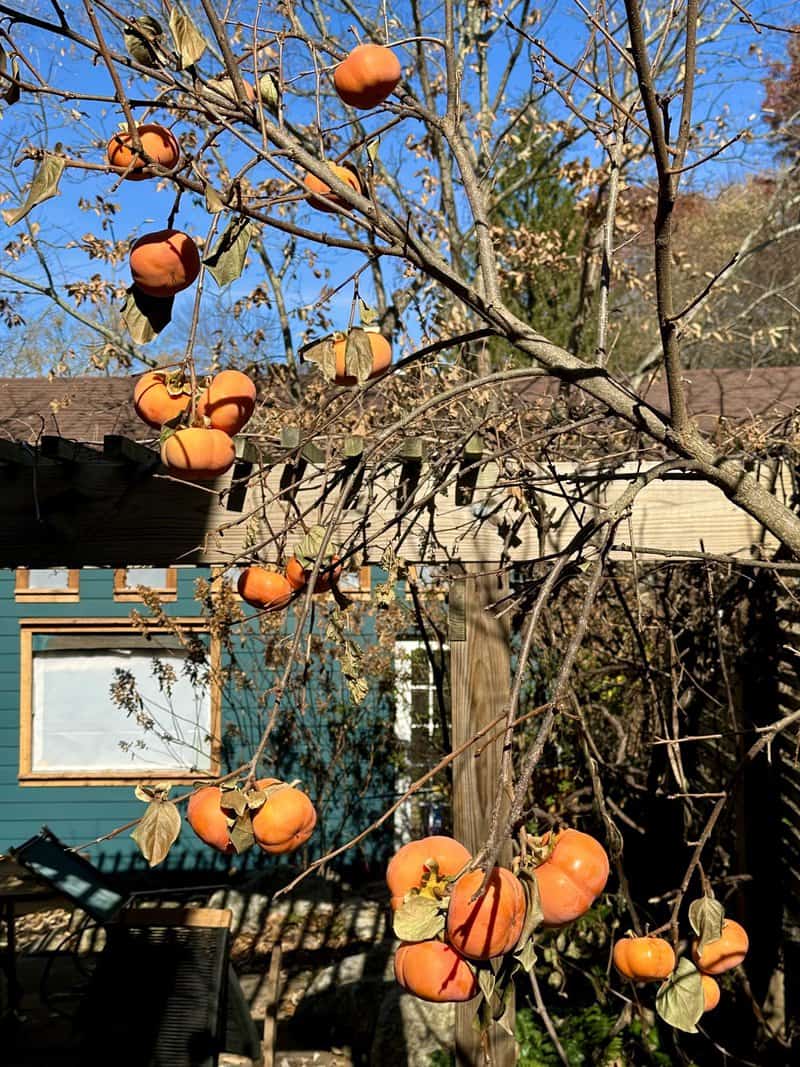
The persimmon is adored throughout Asia and its scientific name, Diospyros kaki, can be translated as “fruit of the Gods.” Others may be less familiar with this fruit, which has a unique flavor and a honey-like delicacy. Persimmon can offer floral notes alongside tart ones, with a soft, custardy texture that is sweet, mild, and rich. Depending on the type of persimmon and degree of ripeness, its skin (which can be eaten) and texture resemble that of an apricot or an apple.
Types of Persimmon Trees
Persimmon trees can be divided into two groups: the native American persimmon (Diospyros virginiana) and the Asian persimmon (Diospyros kaki). The fruit from native American varieties tends to be smaller, much seedier and more astringent (bitter) until the fruit is fully soft and ripe.
In my opinion, Asian persimmon trees are preferable for the home garden, the most common varietals being Fuyu and Hachiya.
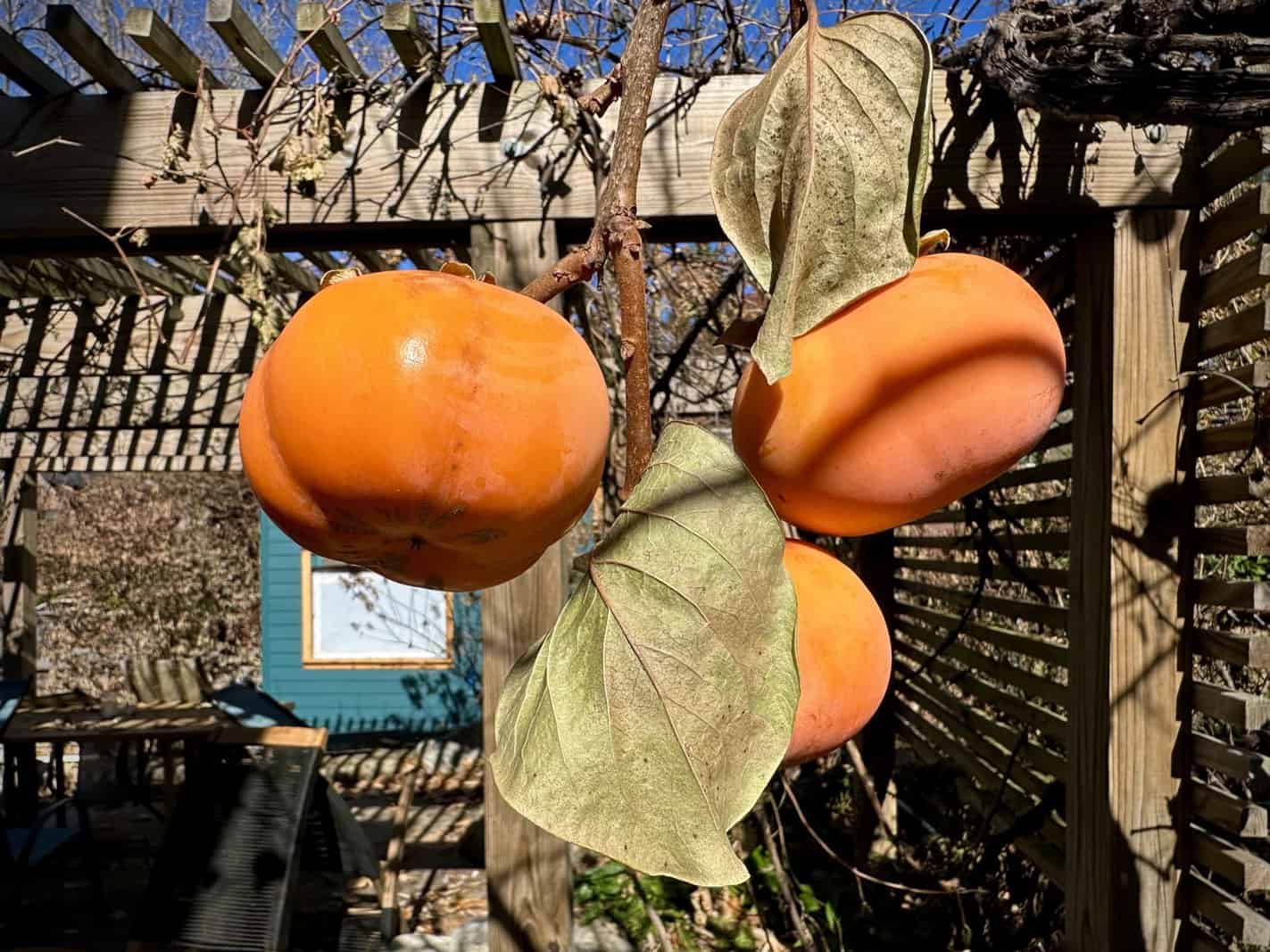
Fuyu Persimmons
Fuyu persimmons are short and round, with a shape similar to an apple. They turn deep orange when ripe. If grocery store Fuyus are pale, leave them on the counter to ripen to a beautiful deep orange. Unlike Hachiyas, Fuyu persimmons can be eaten, skin and all, while still fairly firm, but they do get sweeter the longer they sit and the more deeply-colored they become.
Hachiya Persimmons
Hachiya persimmons are longer and larger than Fuyus, with a tapered bottom. When they are truly ripe — tender at the touch and easily bruised — these persimmons are incredibly sweet and luscious with a soft custard-like texture (which, in truth, is not everyone’s cup of tea.) On the other hand, eat them underripe and you’ll encounter a highly astringent (bitter) flavor.
Fuyu and Jiro persimmons are the best non-astringent varieties. Hachiya is the best astringent variety, but be sure to wait until the fruits are fully soft and ripe. In general, Asian persimmons are easy-to-grow and adaptable to Asheville and WNC. Just know that it may take 4–6 years for a young tree to produce fruit!
Persimma
As for our little Fuyu beauty, I couldn’t be more thrilled with Persimma! Last year she produced a single persimmon, which I picked too early from excitement. This year, she’s produced dozens.
I’ll let them adorn their Queen, like a string of blazing pearls, until Thanksgiving arrives. Then I’ll pluck the best bright beauties to bring to our family get-together. And in my gratitude this year, I’ll pay special homage to Mother Nature, for sharing her “Fruit of the Gods” with us mortals. Thank you.
